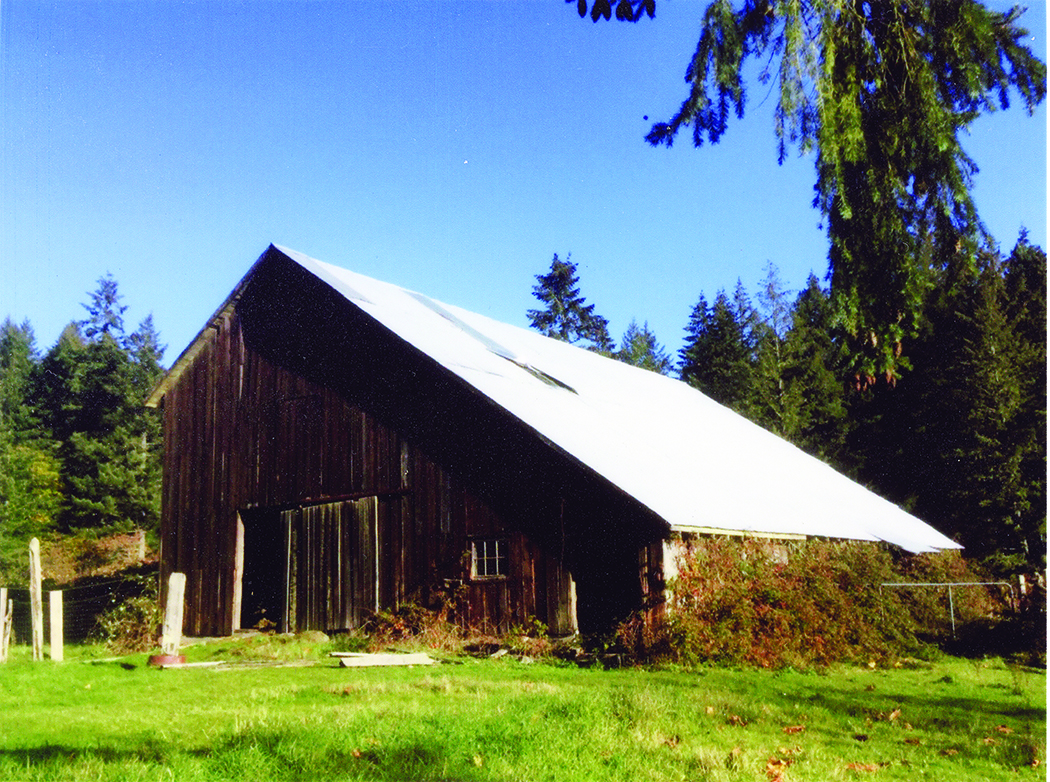
3 minute read
Heritage Barns & Buildings
Heritage Farm Buildings Inventory
A barn inventory by the North Oyster and Area Historical Society (NOAHS) Museum is being revived.
The project was started a few years ago, but COVID put it on hold. The recent destruction of Yellow Point Farm’s barn by fire has got the project going again.
The more-than-a-century old barn was one of the best examples of a wooden barn still in use and the heart of the farm operation. A GoFundMe page has been set up, and donations can be made to the Yellow Point Farm’s Fire Relief Fund. Its loss has reinforced the need to record these beautiful buildings, according to John Bunning, NOAHS member and initiator of the project. “It was probably one of the best barns and in the best condition of all the barns we have in the area, mainly because it was on a concrete foundation and had a metal roof.”
John Bunning first got the idea for a barn inventory when he saw a beautiful old barn on Gomerich Road slowly falling apart and recognized the critical role barns played in early community life.
The old wooden barns were often built with lumber cleared from the land they stood on and were sometimes constructed before the farmhouse. They were the heart and soul of a farm. Bunning recognized the need to record these buildings, as they are the legacy of the agricultural community that characterized much of eastern Vancouver Island.
Unfortunately, many barns were hastily and cheaply constructed, further hastening their decline. Many do not have a proper foundation and were built over tree stumps and log rounds with a relatively short life. As they rotted away, more tree rounds were shoved under the floor.
The roofs are another weakness, he explains. Shingles or shakes last 30 to 50 years and must be replaced. If the roof leaks, the whole structure is compromised. Most of the surviving barns and buildings have sheet metal roofs. Today, the cost of repairing these buildings is enormous, and so they are disappearing, replaced by steel sheds that are utilitarian but soulless.
The barn inventory attempts to capture the barns and their stories.
“They were the centre of the farm. And in those early days, many people lived in their barns. They lived above the animals, and in the wintertime, the animals provided the central heating. It got nice and warm in there.” Bunning laughs.
Another attractive barn still standing was built by two Russian sisters. “There’s this little hammer and sickle up on the barn, so I guess in 1912 or 1915, when they built it, the full horrors of communism hadn’t been made public.” Their house is still in use today as a garden shed.
NOAH volunteers will continue to expand their barn inventory and ask owners for permission to photograph the building and its structural features and fill out a questionnaire regarding the history of the building. The location of the barn is kept private.
Once completed, the records will be available through the NOAHS Museum.
Preservation of old barns is difficult, but it does happen. A barn on Cedar Road has been put on a concrete foundation and has a metal roof. But with many of the barns over a century old now, it’s a race against time.
If you have an old barn on your property, or photos of a barn that is now gone, or even if you have noteworthy farm buildings, please email John at Jbunning@shaw.ca or call 250-9240734 or contact Irene Hawthorne at 250245-2559.





